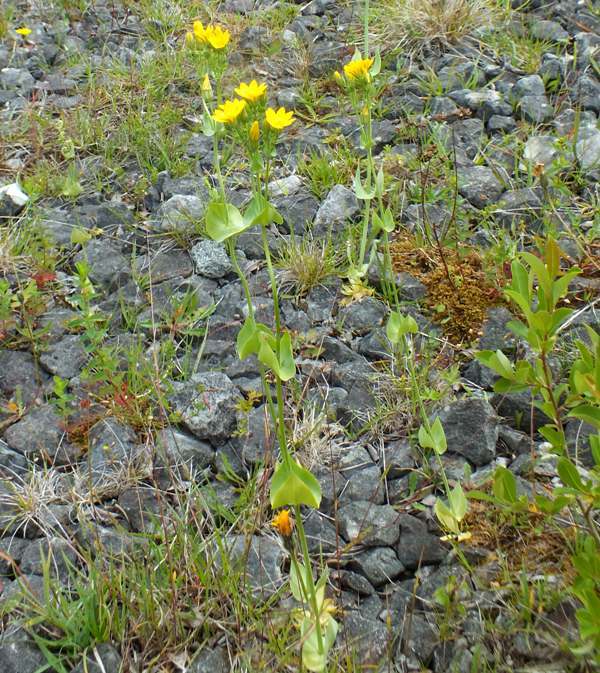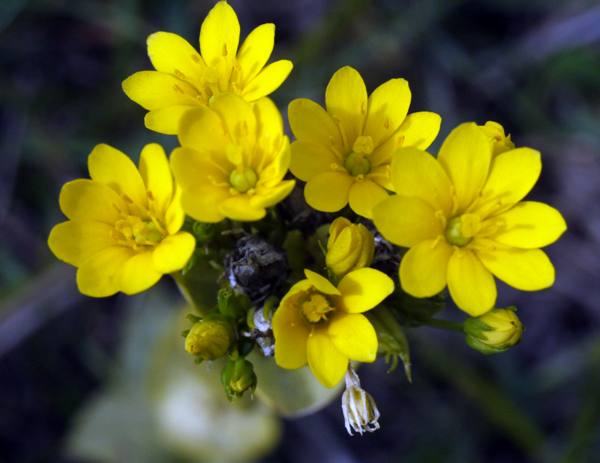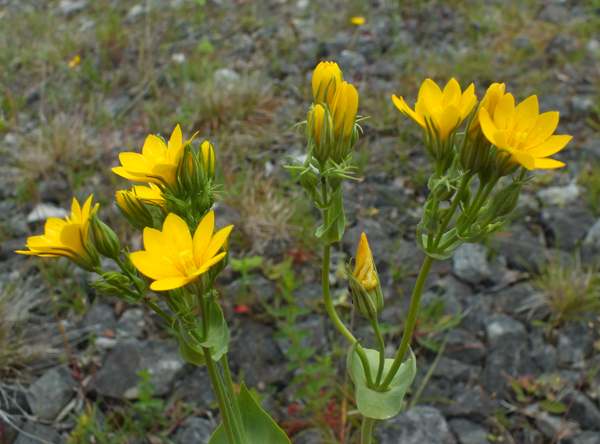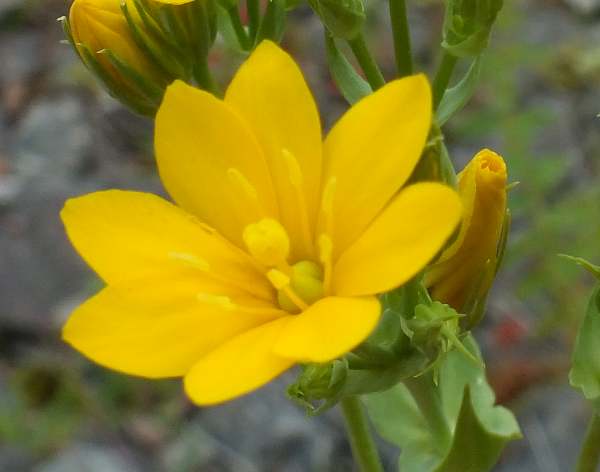Blackstonia perfoliata - Yellow-wort
Phylum: Magnoliophyta - Class: Equisetopsida - Order: Gentianales - Family: Gentianaceae
Identification - Distribution - Habitat - Blooming Times - Etymology - Similar Species
This lovely wildflower occurs in chalk and limestone grassland and on sand dunes, Yellow-wort is a late-flowering annual, comming in to bloom from mid June through to late October. As with other members of the family Gentianaceae, on sunny days the flowers of Yellow-wort open in the early morning and close by mid afternoon.

Description
The plants have bluish-green waxy leaves that retain water and enable Yellow-wort to cope with hot dry conditions. Pairs of opposite leaves are fused together to form an oval saucer rather like a shallow boat hull. Plants are usually 15 to 25cm tall but can grow up to 0.5m tall. The inflorescence consists of lax clusters of yellow flowers each 8 to 15mm across with 6 to 8 overlapping pointed petals.

Distribution
In Britain Yellow-wort thrives in dryish alkaline parts of England and Wales but is only an occasional find in the south of Scotland. In Ireland Yellow-wort is a common sight on the Burren and the Isle of Arran but an uncommon find elsewhere. On mainland Europe this plant is most common in Mediterranean countries.
Habitat
This lime-loving wildflower is found on chalk downland slopes, limesone pavement, limestone screes and alkaline meadows as well as on some lime-rich grassy roadside verges.
Blooming Times
Yellow-wort blooms in Britain and Ireland from mid June until late October, and is generally at its best in July and August.

Etymology
The generic botanical name Blackstonia honours the 18th-century English botanist and apothecary John Blackstone (1712-1753). The specific epithet perfoliata means 'through-leaves' and refers to the fact that the stems appear to pass through opposite leaves that are fused in pairs.
Similar Species
Yellow-wort is easily distinguished from other members of the family Gentianacea (a few of which do have yellow flowers rather than the more common blue, purple or mauve) by its fused leaf pairs.
Acknowledgements
This page includes pictures kindly contributed by Betty and Tony Rackham.
Sue Parker's latest ebook is a revised and enlarged second edition of the acclaimed Wildflowers in the Algarve - an introductory guide. Full details here...
Buy it for just £3.95 on Amazon...
Please Help Us: If you have found this information interesting and useful, please consider helping to keep First Nature online by making a small donation towards the web hosting and internet costs.
Any donations over and above the essential running costs will help support the conservation work of Plantlife, the Rivers Trust and charitable botanic gardens - as do author royalties and publisher proceeds from books by Pat and Sue.



